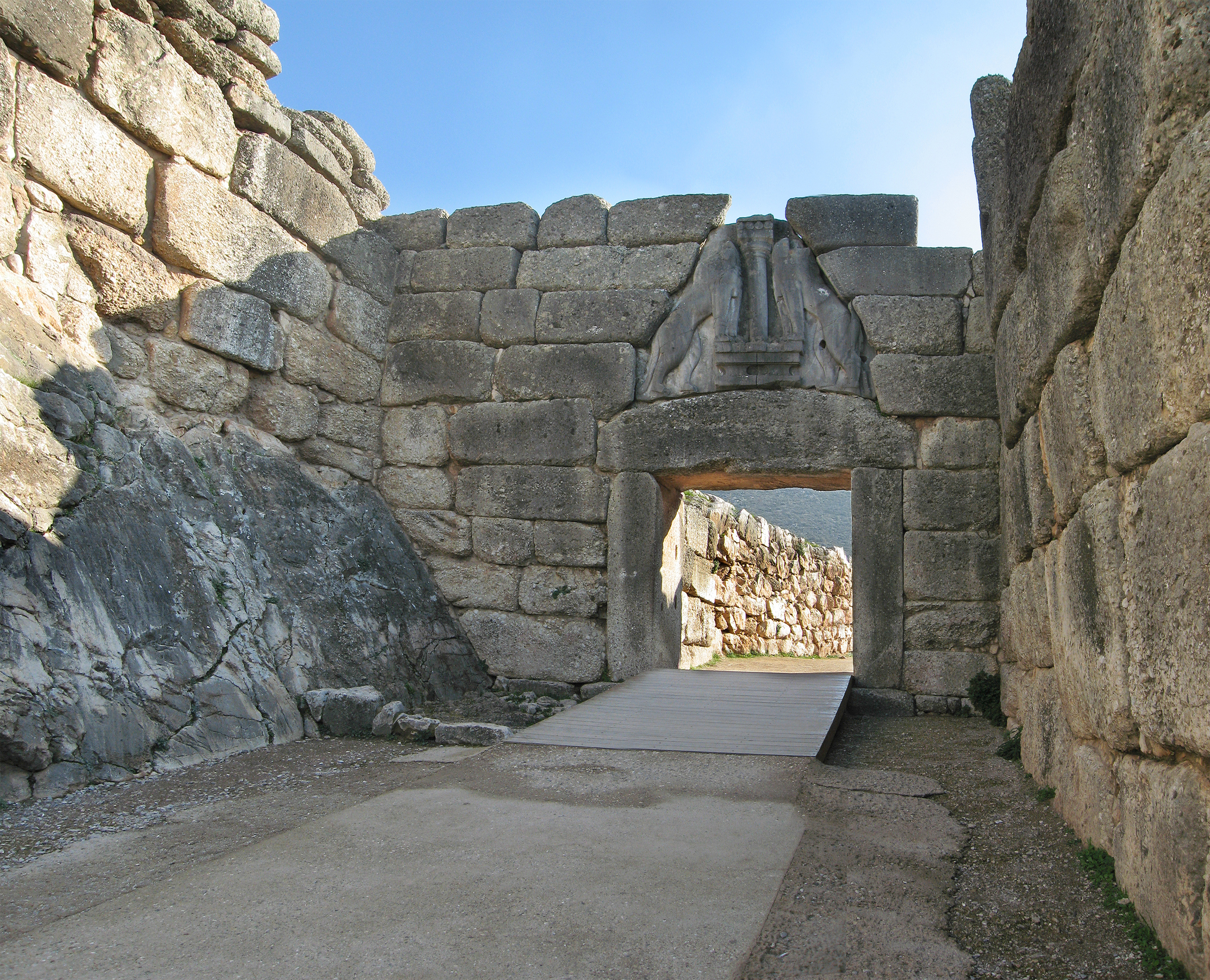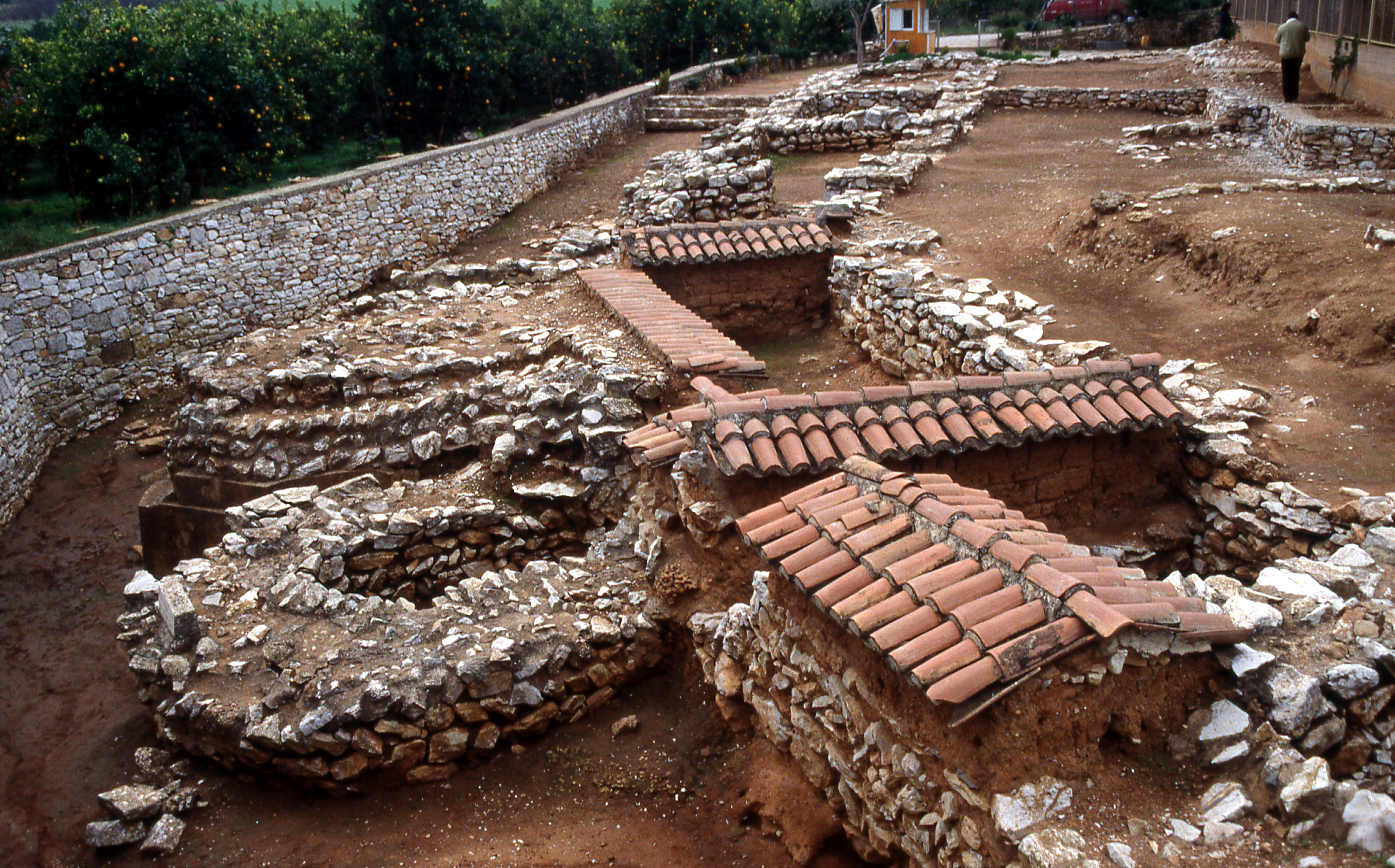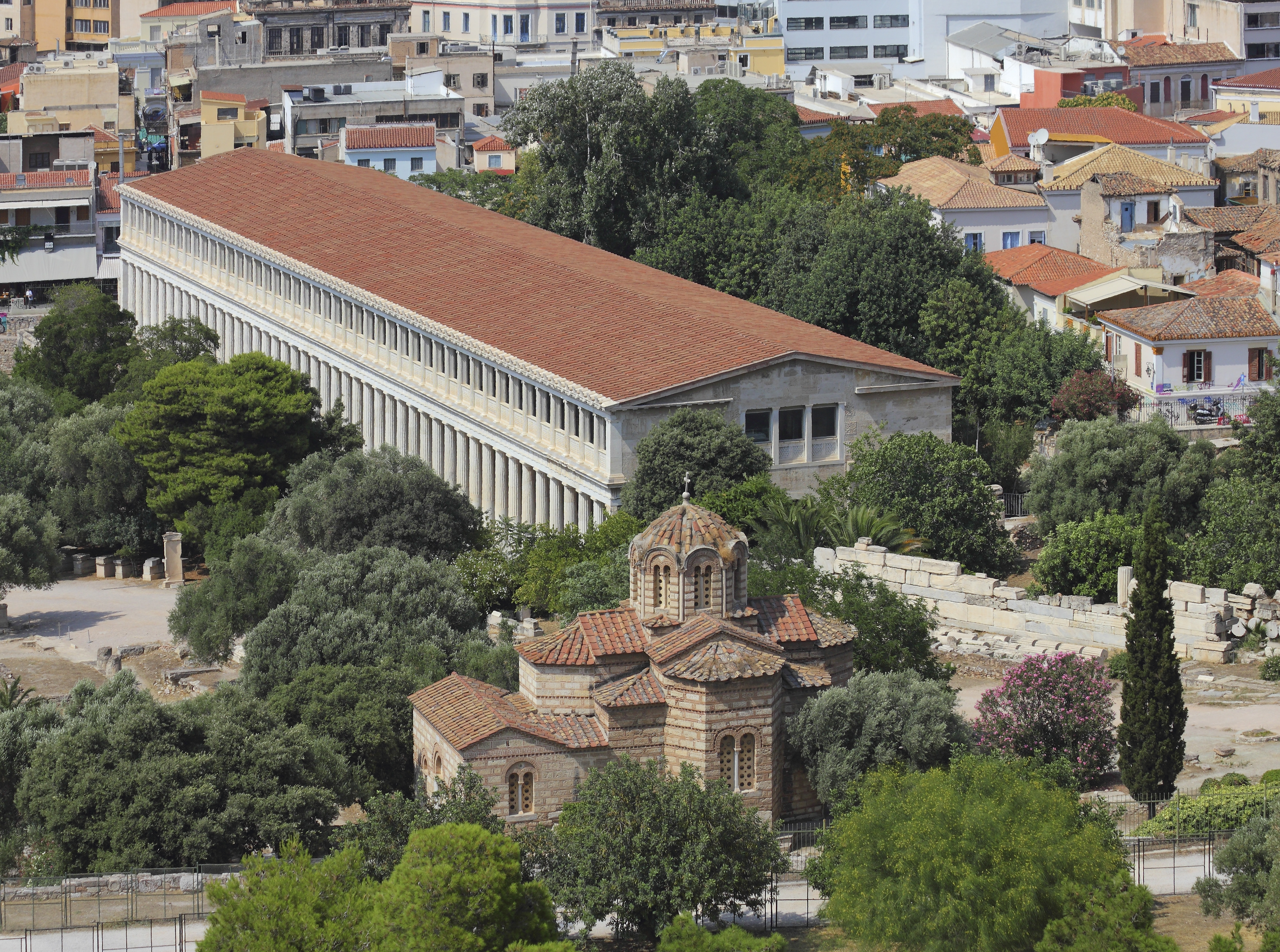|
Pre-Greek Substrate
The pre-Greek substrate (or substratum) consists of the unknown pre-Greek language or languages (either Pre-Indo-European languages, Pre-Indo-European or other Indo-European languages) spoken in prehistoric Greece prior to the emergence of the Proto-Greek language in the region , during the Early Helladic period. About 1,000 words of Greek vocabulary cannot be adequately explained as derivatives from Proto-Greek or Proto-Indo-European, leading to the Stratum (linguistics), substratum hypothesis. According to scholars, Ancient Greek was likely influenced by two types of substrates: one Indo-European, probably an unknown Anatolian language that has been called "Parnassian", and one or several non-Indo-European languages that pre-date the coming of Greeks to the region. Overview Linguistic situation Based upon toponymic and lexical evidence, it is generally assumed that one or several languages were once spoken in both the Greek peninsula and western Asia Minor before Mycenaean ... [...More Info...] [...Related Items...] OR: [Wikipedia] [Google] [Baidu] |
Pre-Indo-European Languages
The pre-Indo-European languages are any of several ancient languages, not necessarily related to one another, that existed in Prehistoric Europe, Asia Minor, Ancient Iran and United Nations geoscheme for Asia#Southern_Asia, Southern Asia before the arrival of speakers of Indo-European languages. The oldest Indo-European language texts are Hittite language, Hittite and date from the 19th century BC in Kültepe (modern eastern Turkey), and while estimates vary widely, the spoken Indo-European languages are believed to have developed at the latest by the 3rd millennium BC (see Proto-Indo-European Urheimat hypotheses). Thus, the pre-Indo-European languages must have developed earlier than or, in some cases, alongside the Indo-European languages that ultimately displaced almost all of them. A handful of the pre-Indo-European languages are still extant: in Europe, Basque language, Basque retains a localised strength, with fewer than a million native speakers, but the Dravidian language ... [...More Info...] [...Related Items...] OR: [Wikipedia] [Google] [Baidu] |
Helladic Chronology
Helladic chronology is a relative dating system used in archaeology and art history. It complements the Minoan chronology scheme devised by Sir Arthur Evans for the categorisation of Bronze Age artefacts from the Minoan civilization within a historical framework. Whereas Minoan chronology is specific to Crete, the cultural and geographical scope of Helladic chronology is confined to mainland Greece during the same timespan (c. 3200 – c. 1050 BC). Similarly, a Cycladic chronology system is used for artifacts found in the Aegean islands. Archaeological evidence has shown that, broadly, civilisation developed concurrently across the whole region and so the three schemes complement each other chronologically. They are grouped together as "Aegean" in terms such as Aegean art and, rather more controversially, Aegean civilization. The systems derive primarily from changes in the style of pottery, which is a benchmark for relative dating of associated artifacts such as tools and wea ... [...More Info...] [...Related Items...] OR: [Wikipedia] [Google] [Baidu] |
Stop (consonant)
In phonetics, a plosive, also known as an occlusive or simply a stop, is a pulmonic consonant in which the vocal tract is blocked so that all airflow ceases. The occlusion may be made with the tongue tip or blade (, ), tongue body (, ), lips (, ), or glottis (). Plosives contrast with nasals, where the vocal tract is blocked but airflow continues through the nose, as in and , and with fricatives, where partial occlusion impedes but does not block airflow in the vocal tract. Terminology The terms ''stop, occlusive,'' and ''plosive'' are often used interchangeably. Linguists who distinguish them may not agree on the distinction being made. "Stop" refers to the stopping of the airflow, "occlusive" to the articulation which occludes (blocks) the vocal tract, and "plosive" to the plosion (release burst) of the consonant. Some object to the use of "plosive" for inaudibly released stops, which may then instead be called "applosives". The International Phonetic Association and the ... [...More Info...] [...Related Items...] OR: [Wikipedia] [Google] [Baidu] |
Mycenaean Greece
Mycenaean Greece (or the Mycenaean civilization) was the last phase of the Bronze Age in ancient Greece, spanning the period from approximately 1750 to 1050 BC.. It represents the first advanced and distinctively Greek civilization in mainland Greece with its palatial states, urban organization, works of art, and writing system.. The Mycenaeans were mainland Greek peoples who were likely stimulated by their contact with insular Minoan Crete and other Mediterranean cultures to develop a more sophisticated sociopolitical culture of their own. The most prominent site was Mycenae, after which the culture of this era is named. Other centers of power that emerged included Pylos, Tiryns, and Midea in the Peloponnese, Orchomenos, Thebes, and Athens in Central Greece, and Iolcos in Thessaly. Mycenaean settlements also appeared in Epirus, Macedonia, on islands in the Aegean Sea, on the south-west coast of Asia Minor, and on Cyprus, while Mycenaean-influenced settlements appear ... [...More Info...] [...Related Items...] OR: [Wikipedia] [Google] [Baidu] |
Palatalization (phonetics)
In phonetics, palatalization (, ) or palatization is a way of pronouncing a consonant in which part of the tongue is moved close to the hard palate. Consonants pronounced this way are said to be palatalized and are transcribed in the International Phonetic Alphabet by affixing a superscript ''j'' ⟨ʲ⟩ to the base consonant. Palatalization is not Phonemic contrast, phonemic in English, but it is in Slavic languages such as Russian language, Russian and Ukrainian language, Ukrainian, Finnic languages such as Estonian language, Estonian, Karelian language, Karelian, and Võro language, Võro, and other languages such as Irish language, Irish, Marshallese language, Marshallese, Kashmiri language, Kashmiri, and Japanese language, Japanese. Types In technical terms, palatalization refers to the secondary articulation of consonants by which the body of the tongue is raised toward the hard palate and the alveolar ridge during the articulation of the consonant. Such consonants are phon ... [...More Info...] [...Related Items...] OR: [Wikipedia] [Google] [Baidu] |
Labialization
Labialization is a secondary articulatory feature of sounds in some languages. Labialized sounds involve the lips while the remainder of the oral cavity produces another sound. The term is normally restricted to consonants. When vowels involve the lips, they are called rounded. The most common labialized consonants are labialized velars. Most other labialized sounds also have simultaneous velarization, and the process may then be more precisely called labio-velarization. The "labialization" of bilabial consonants often refers to protrusion instead of a secondary articulatory feature velarization. ʷdoesn't mean ˠalthough refers to a labial–velar approximant. In phonology, labialization may also refer to a type of assimilation process. Occurrence Labialization is the most widespread secondary articulation in the world's languages. It is phonemically contrastive in Northwest Caucasian (e.g. Adyghe), Athabaskan, and Salishan language families, among others. T ... [...More Info...] [...Related Items...] OR: [Wikipedia] [Google] [Baidu] |
Vowel System
A vowel is a speech sound pronounced without any stricture in the vocal tract, forming the nucleus of a syllable. Vowels are one of the two principal classes of speech sounds, the other being the consonant. Vowels vary in quality, in loudness and also in quantity (length). They are usually voiced and are closely involved in prosodic variation such as tone, intonation and stress. The word ''vowel'' comes from the Latin word , meaning "vocal" (i.e. relating to the voice). In English, the word ''vowel'' is commonly used to refer both to vowel sounds and to the written symbols that represent them (, , , , , and sometimes and ). Definition There are two complementary definitions of vowel, one phonetic and the other phonological. *In the phonetic definition, a vowel is a sound, such as the English "ah" or "oh" , produced with an open vocal tract; it is median (the air escapes along the middle of the tongue), oral (at least some of the airflow must escape through the mo ... [...More Info...] [...Related Items...] OR: [Wikipedia] [Google] [Baidu] |
Lexicon
A lexicon (plural: lexicons, rarely lexica) is the vocabulary of a language or branch of knowledge (such as nautical or medical). In linguistics, a lexicon is a language's inventory of lexemes. The word ''lexicon'' derives from Greek word (), neuter of () meaning 'of or for words'. Linguistic theories generally regard human languages as consisting of two parts: a lexicon, essentially a catalogue of a language's words (its wordstock); and a grammar, a system of rules which allow for the combination of those words into meaningful sentences. The lexicon is also thought to include bound morphemes, which cannot stand alone as words (such as most affixes). In some analyses, compound words and certain classes of idiomatic expressions, collocations and other phrasemes are also considered to be part of the lexicon. Dictionaries are lists of the lexicon, in alphabetical order, of a given language; usually, however, bound morphemes are not included. Size and organization Items ... [...More Info...] [...Related Items...] OR: [Wikipedia] [Google] [Baidu] |
Phonology
Phonology (formerly also phonemics or phonematics: "phonemics ''n.'' [''obsolescent''] 1. Any procedure for identifying the phonemes of a language from a corpus of data. 2. (formerly also phonematics) A former synonym for phonology, often preferred by the American Structuralists and reflecting the importance in structuralist work of phonemics in sense 1.": "phonematics ''n.'' 1. [''obsolete''] An old synonym for phonemics (sense 2).") is the branch of linguistics that studies how languages systematically organize their phonemes or, for sign languages, their constituent parts of signs. The term can also refer specifically to the sound or sign system of a particular language variety. At one time, the study of phonology related only to the study of the systems of phonemes in spoken languages, but now it may relate to any Linguistic description, linguistic analysis either: Sign languages have a phonological system equivalent to the system of sounds in spoken languages. The buil ... [...More Info...] [...Related Items...] OR: [Wikipedia] [Google] [Baidu] |
Lerna
In classical Greece, Lerna () was a region of springs and a former lake located in the municipality of the same name, near the east coast of the Peloponnesus, south of Argos. Even though much of the area is marshy, Lerna is located on a geographically narrow point between mountains and the sea, along an ancient route from the Argolid to the southern Peloponnese; this location may have resulted in the importance of the settlement. Its site near the village Mili at the Argolic Gulf is most famous as the lair of the Lernaean Hydra, the chthonic many-headed water snake, a creature of great antiquity when Heracles killed it, as the second of his labors. The strong Karstic springs remained; the lake, diminished to a silt lagoon by the 19th century, has vanished. Lerna is notable for several archaeological sites, including an Early Bronze Age structure known as House of the Tiles, dating to the Early Helladic period II (2500–2300 BC). Myths The secret of the Lernaean spring w ... [...More Info...] [...Related Items...] OR: [Wikipedia] [Google] [Baidu] |
American School Of Classical Studies At Athens
The American School of Classical Studies at Athens (ASCSA; ) is one of 19 foreign archaeological institutes in Athens, Greece. It is a member of the Council of American Overseas Research Centers (CAORC). CAORC is a private not-for-profit federation of independent overseas research centers that promote advanced research, particularly in the humanities and social sciences, with focus on the conservation and recording of cultural heritage and the understanding and interpretation of modern societies. General information With an administrative base in Princeton, New Jersey, and a campus in Athens, the American School of Classical Studies at Athens is one of the leading American research and teaching institutions in Greece, dedicated to the advanced study of all aspects of Greek culture, from antiquity to the present. Founded in 1881, the School is a consortium of nearly 200 colleges and universities in the United States and Canada. It was the first American overseas research center, ... [...More Info...] [...Related Items...] OR: [Wikipedia] [Google] [Baidu] |
Linear B
Linear B is a syllabary, syllabic script that was used for writing in Mycenaean Greek, the earliest Attested language, attested form of the Greek language. The script predates the Greek alphabet by several centuries, the earliest known examples dating to around 1450 BC. It is adapted from the earlier Linear A, an undeciphered script perhaps used for writing the Minoan language, as is the later Cypriot syllabary, which also recorded Greek. Linear B, found mainly in the Minoan palace, palace archives at Knossos, Kydonia, Pylos, Thebes, Greece, Thebes and Mycenae, disappeared with the fall of Mycenaean Greece, Mycenaean civilization during the Late Bronze Age collapse. The succeeding period, known as the Greek Dark Ages, provides no evidence of the use of writing. Linear B was deciphered in 1952 by English architect and self-taught linguist Michael Ventris based on the research of American classicist Alice Kober. It is the only Bronze Age Aegean script to have been deciphered, w ... [...More Info...] [...Related Items...] OR: [Wikipedia] [Google] [Baidu] |






